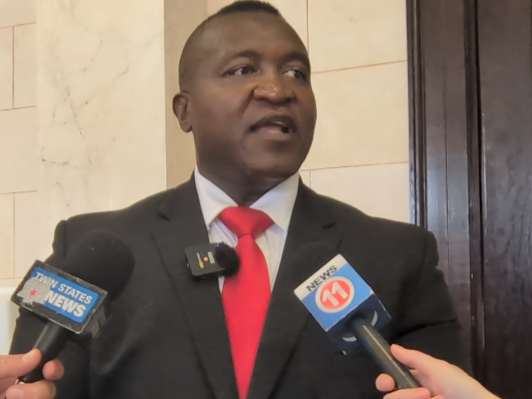Kentucky’s retirement systems continue downward slide
Published 7:33 am Tuesday, November 29, 2016

- Retirement fund
FRANKFORT — The financial woes of Kentucky’s public pension systems continue to worsen, but it’s really one of the six plans which is causing the most concern.
Kentucky’s pension system is rated as the worst funded in the country with the Kentucky Employee Retirement System (KERS) funded at only 17 percent of its total obligations.
The KERS has $11 billion in assets and total liabilities of $32 billion leaving it with $21 billion in unfunded liabilities. That unfunded liability actually increased by $1.5 billion in the past year.
But that’s just one plan among several administered by the state that also operates pension plans for state teachers, city and county employees and Kentucky State Police. And all of those except the KSP fund are in relatively good shape, ranging from 57 percent to 60 percent funded.
The KSP fund is funded at 30.3 percent.
“The system is not nearly as bad off as that (17 percent figure) implies,” said KERS Interim Executive Director David Eager.
But he compared the KERS system to watching the water drain from a bathtub, adding it will take time and hard work to climb out of the hole.
The Kentucky Teachers Retirement System which is operated separately from the others is 54.6 percent funded (meaning it has 54.6 percent of the money it would need if it had to immediately pay out all benefits), according to Beau Barnes, Deputy Executive Director of KTRS.
KTRS also had to sell off $650 million in assets during the past year to cover its payments to retirees and has a $14.5 billion unfunded liability.
But that picture doesn’t account for a significant increase in state funding approved by the General Assembly last spring and which began after July 1 of this year.
The $973 million in additional funding approved by the legislature “completely changes everything,” Barnes told the Public Pension Oversight Committee Monday.
Barnes said that helps offset the losses and also helps the fund with cash flow.
In total, the pension plans face a combined $32 billion of unfunded liability but all but $11 billion of that is from the KERS program.
Eager said the KRS board is developing plans for all the plans it manages (all except the teachers’ plan) but each plan will be tailored for each of its funds.
Those plans in better financial condition can pursue different and more aggressive investment strategies than the poorly funded KERS plan.
But the challenges for KERS are enormous: there are actually more KERS retirees than active workers in the system.
And while lawmakers have criticized the plan’s investment strategies the biggest problem has been underfunding by multiple governors and legislative sessions.
Current Gov. Matt Bevin has made shoring up the pension systems a priority and persuaded lawmakers last spring to significantly up funding for the plans. Additionally, they budgeted conservatively, hoping to generate larger surpluses some of which will be allocated to the pension systems.
Lawmakers are also looking at changes to benefit structures for future employees.
Both the legislators’ pension plan and one for the state’s judges are in far stronger financial shape. Lawmakers’ pension system has 79 percent of the funds it needs to pay off all obligations, almost five times better than the state employee system.
Ronnie Ellis writes for CNHI News Service and is based in Frankfort. Reach him at rellis@cnhi.com. Follow CNHI News Service stories on Twitter at www.twitter.com/cnhifrankfort.





